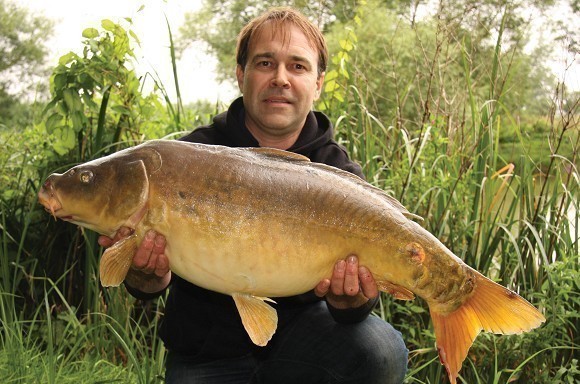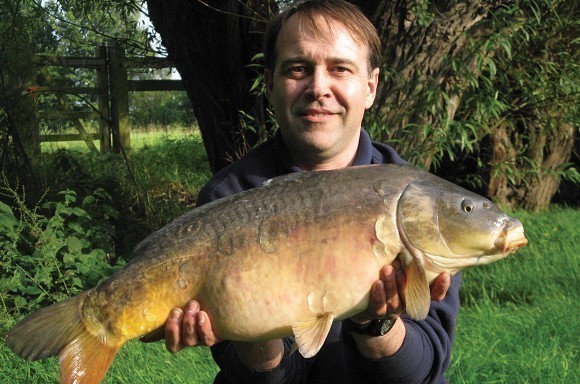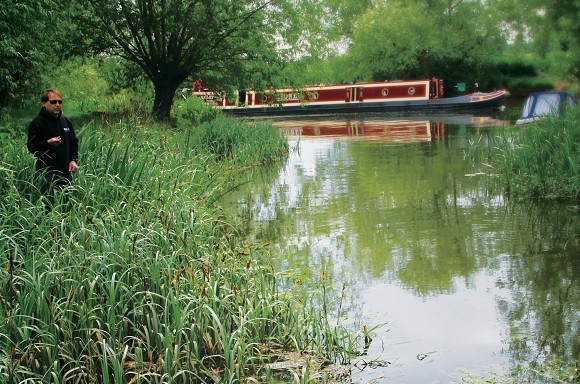
Life on the river
Bored of fishing your local stillwater? Fed up of competing against anglers as much as the carp? Prefer a bit of peace and quiet? River expert, Peter Cox has the answer...
Isn’t it funny how the simple practice of angling for fish can have so many twists and turns of fate? What I mean is you never really feel like it’s changing, but when you look back over time you soon notice that it can do – and quite dramatically too sometimes. This is certainly the case for me. Having found the longing desire that I suppose we all have for a ‘tug-on-the-line’ as a boy growing-up and fishing the River Thames, my angling life has travelled full-circle so to speak.
As I grew up in a time when fishing for carp became more and more popular, I did fish lakes and stillwaters, both at home and abroad. Although as I found myself becoming slightly put off by the hustle and bustle of busy day ticket waters, I have for some years now spent a lot of my fishing time back on the River Thames – where it all began.
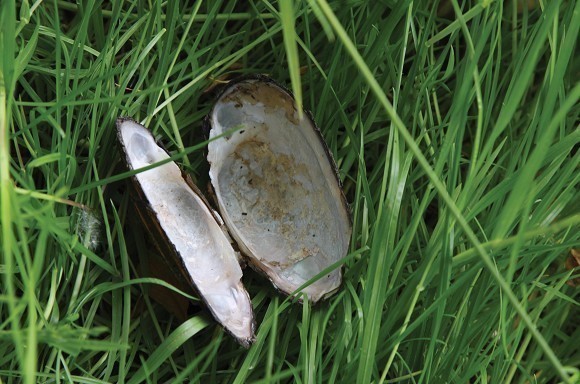
Swan mussels are just one obvious natural food found along the riverbank
Initial success was slow in coming, but over the years through experience and my fair share of good luck, catches have become more regular, with river carp to over thirty-pounds gracing my net. With all the flooding into the Thames in recent years I’m sure there are bigger fish to be caught and it is this thought, anticipation almost of the ‘unknown’ that is one of many attractions for me.
The fact that I can also target other specimen sized fish such as barbel, chub and of course the carp anglers favourite bream is another. And like most anglers, my home and busy working life dictate the time I have free to fish, which is short, but just enough for the odd afternoon session or quick overnight trip.
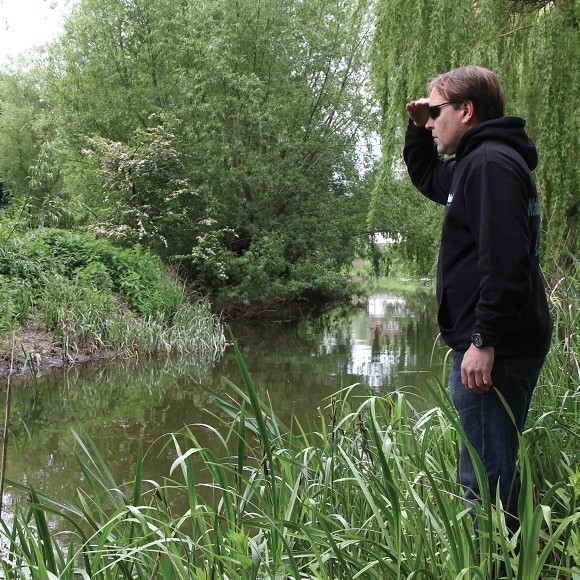
Looking for signs of carp
This kind of suits river carping, as it’s certainly not a case of being bivvied-up for days and waiting for it to happen. As you might expect, the carp that reside in the long, flowing sections of the Thames are pretty nomadic. Found in one section or even one particular feature one day and gone the next. With location such a key aspect of success, coupled with my limited time, I soon found that the practice of pre-baiting would stack a few more odds in my favour.
So although my fishing of the Thames will not begin before June 16th and the start of the season, my preparations for this date and every session there after most certainly will.
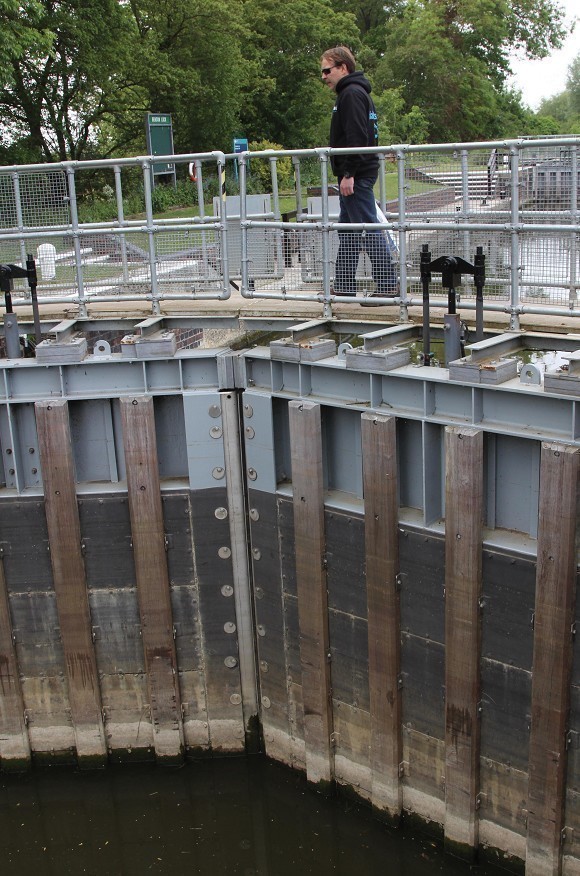
Locks can be productive although the boat traffic can drive you mad
Target areas
This normally begins by choosing three different areas of river to target. There are a few reasons for this, the main being that you have another option should an area simply fail to produce or should you find someone already fishing there. The presence of other anglers and the likelihood of this happening is also an important consideration when choosing your target areas.
In my experience, most river carp prefer the quieter areas and don’t respond well to the disturbance of too many anglers. For this reason it can sometimes be a good idea to stay clear of easily accessible river stretches or comfortable spots to plot-up. Although sometimes this is unavoidable when areas are simply look too good to ignore.
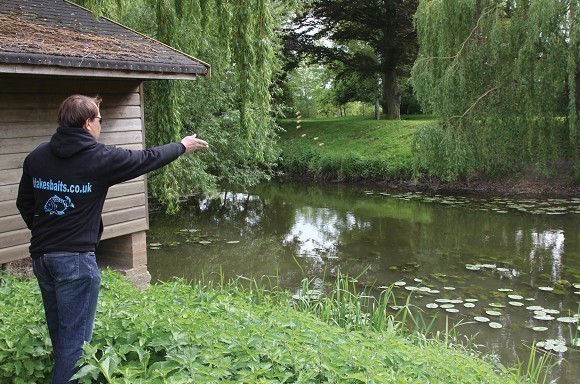
Lilies, overhanging trees and the cover of a boathouse – the perfect place for a little bait
Having chosen a few areas, I’ll begin to pre-bait the features I’m most likely to fish to, which in most cases are similar to those you would find attractive on a lake. Tree-lines, overhanging foliage and reedbeds are a prime example, although the river can present other carpy features you’d probably not find at your local pit. Marinas and stretches of the river used to moor boats or barges can be very productive and great locations to include within the pre-baiting plan. They offer the carp vast areas of cover as well as some of the foods they will generally be looking for.
Remember these fish have no dependency upon angler’s baits, which is often a high percentage of the food source to support the carp of a busy stillwater fishery. River carp are often long lean fish, accustom to travelling up and down stretches of flowing water in search of natural foods. Yes, they will be drawn to our baits and will readily eat them and return to areas where they find them, but only through their almost scavenging exploration of the river.
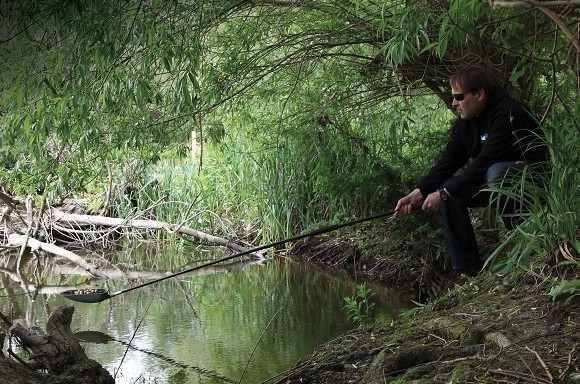
A baiting spoon is handy for baiting the tricky spots
In most cases it will be natural foods that they will find and therefore be drawn to. Shellfish such as crayfish and swan mussels as well as aquatic insect larva or invertebrates and beds of bloodworm are all food that will be on the menu. So it’s worth looking for the areas that will hold these tasty morsels, such as marinas, as areas of boat traffic are constantly disturbing and turning over the bottom of the river, to expose a fresh meal for the carp.
Lock gates are another place to find a regular disturbance of silt. Despite this being a good prospect I must admit to steering away from the lock or not being too close to them anyway, because in really busy periods of boat traffic you can find yourself reeling in every five minutes. That’s doesn’t really help my short session fishing.
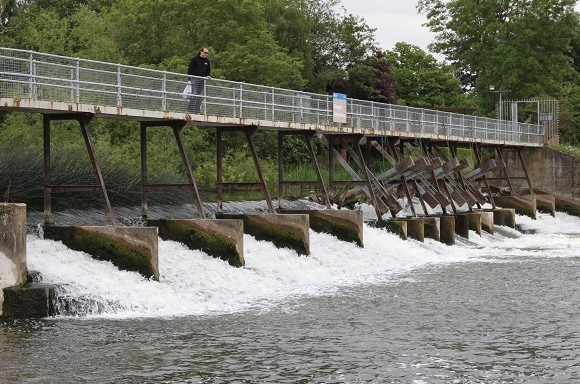
I’ll normally leave the weirs alone to begin with
One final point on marinas and moored boats is that many of these vessels are lived in house boats. This in turn can lead to regular supply of food items being tipped over the side, which can see some boats having their own resident carp.
With a little reconnaissance and a few evenings spent walking the river after work, which is a pleasurable experience in itself, you can soon come across other areas obviously attractive to the carp. Reedbeds are one such feature as are lilies and the cabbage-like weed. All of which harbour water snails, small fry and nymphs from the river flow.
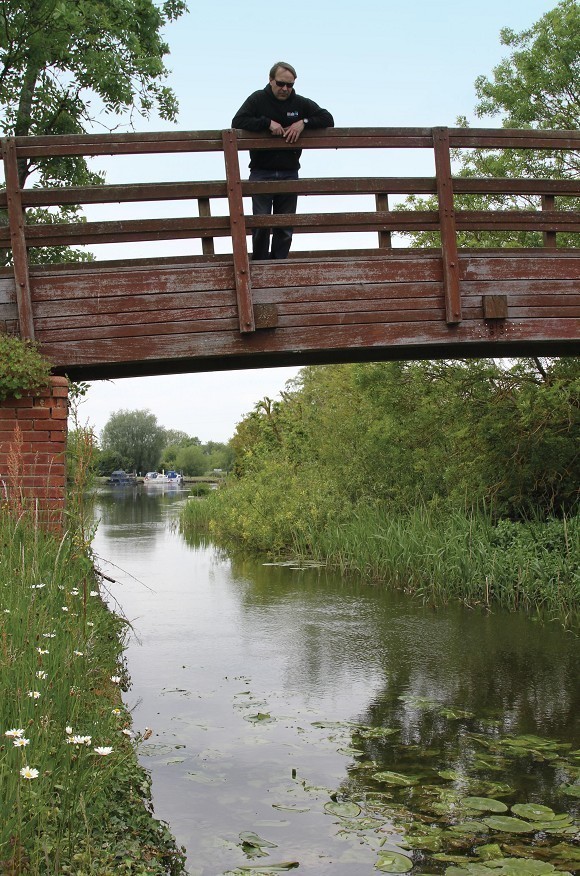
Some of the bridges make great vantage points for spotting fish
With a little thought put into areas like this that the carp will most probably be heading for anyway, you can soon build up a series of spots to prepare for a bite. Some map research can also be useful in the beginning, as you’ll get a good perspective of the actual layout of the river. Where it widens, where it narrows, where the bends are and rather importantly where the side waters and river tributaries lie. These places are often sections outside of the main river flow, areas that the carp many of which being still water escapees from various floods, will be find comfortable and less energy-zapping.
This is really where it’s also worth mentioning the river weirs providing a valuable oxygen source, especially through the height of summer. During periods of prolonged warm weather (we sometimes get them!) it can be worth concentrating on these areas a little more, although I don’t find them to be overly productive at the beginning of the season.
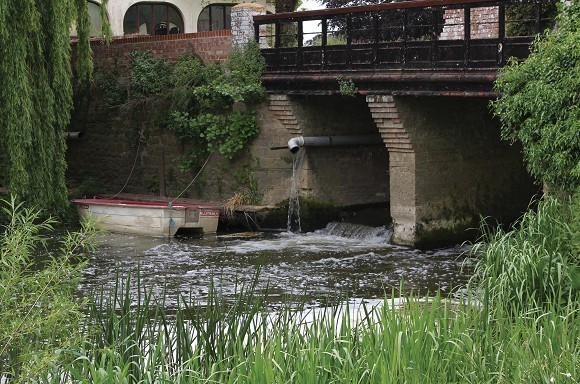
Oxygenated water can be attractive to the fish through summer
Because you are trying to locate the carp onto your chosen spot with regular feeding, it also pays to try making things easier for yourself for when the time comes to wet a line. Personally I like to prepare spots close to the same bank I’ll be fishing from. This way when it comes to fishing them, I’ll be fishing under the rod tip. This removes a number of potential problems to contend with on the river such as the flow lifting your line up high in water. Not that I think this would put off the fish too much, it’s just that you will be forever disturbing your spot by reeling in all the time for passing boats. Get caught out in this way and you be hooked into to something much more than you bargained for!
Hooking a fish a yard or so from the bank is also much easier to control and guide away from the numerous snags and hazardous features said fish is likely to head for. Most importantly when spots are close, they can be observed for signs of fish activity, hopefully of the carp kind. If I notice a shoal of barbel over a spot every time I pre-bait, I may not bother fishing for carp. Instead I may set-up to target the barbel themselves or change baiting tactics to try and discourage non carp species.
The issue of other river fish species is one difficult to overcome and to some degree I don’t think this is a bad idea. Feeding fish will attract others and you can sometimes use smaller fish to your advantage to clean-up spots ahead of using carp tactics.
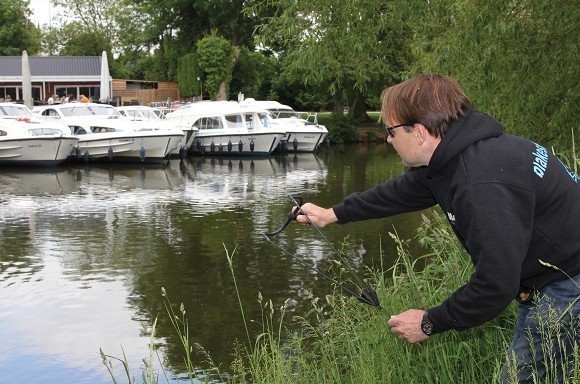
Marinas are great holding areas for carp
Carp food on rivers
Bait-wise my main method is to pre-bait with boilies, usually of 18 to 22mm sizes that are easy to introduce and go some way towards avoiding the bellies of smaller nuisance fish. Occasionally I may use large halibut pellets and have also had success pre-baiting with prepared particles such as hemp, maples and maize, which are quite good for bulking out the feed. Although I will usually reduce the amount of particle and increase the boilies the closer I get to a fishing session.
Boilies with a strong flavour are perfect for the river, as are boilies soaked in a flavoured glug or oil to increase the leakage of attraction carried down stream. Each year when I start my river campaign, I’ll begin my pre-baiting schedule at least two weeks prior to the start of the season; introducing my bait on a little-and-often basis, with a fresh helping applied to my spots every other night.
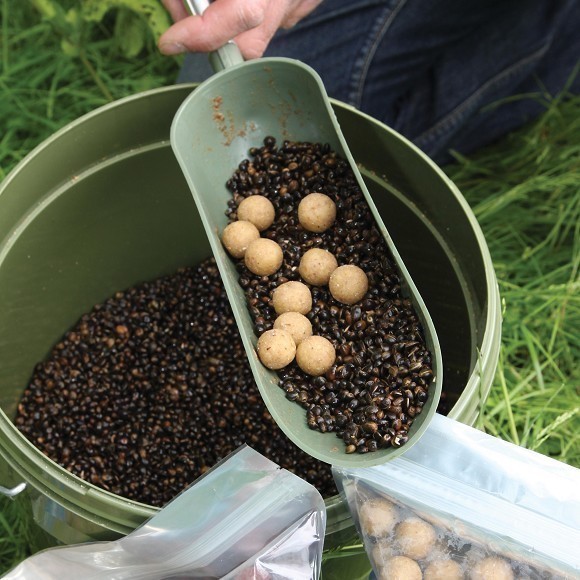
Hemp and boilies can be a good combination
As I’ve said, an evening stroll down the river is quite relaxing and no great hardship. Most spots can be prepped-up by hand or a catapult, although I do find a baiting spoon very handy for accurately baiting-up spots under overhanging bushes or snags.
With a little thought and preparation, locating and catching river carp can become much simpler. Just keep in mind that river carp are much more active than those in lakes. They need to constantly adjust themselves to their environment, ingest energy providing food due to the water currents, and compete with many other species in the process. For this reason, a very good spot that provides the carp with regular ‘free’ food is the first step towards successfully angling for river carp.
Next month I’ll reveal how the open night of the magical June 16th went, along with looking at my rigs and bait placement.
